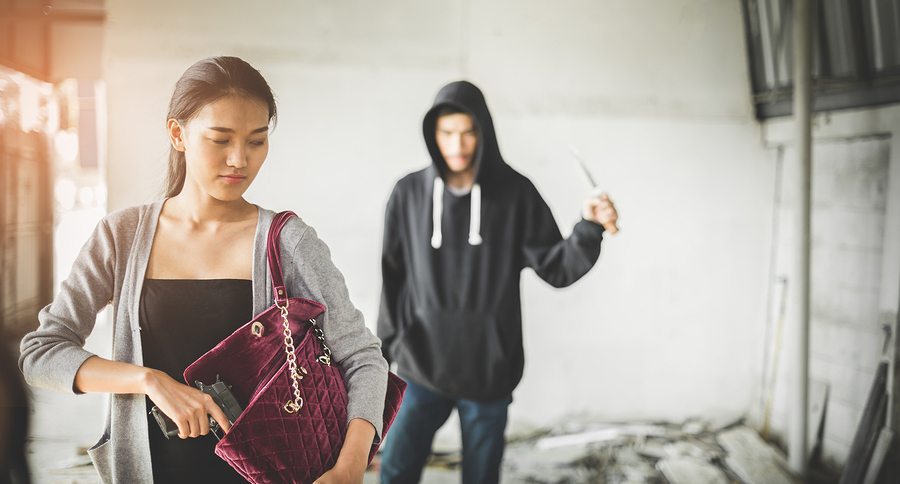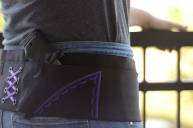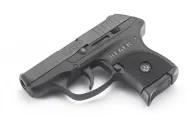When first-time gun owners finally get their concealed carry license, there are some avoidable mistakes made along the way.
You have purchased your gun, you've taken your required courses, and you're now on your way to carrying concealed. This is an exciting step for every gun owner, and a very important one.
However, first-time carriers sometimes make mistakes that are easily avoidable. Instead of learning the hard way, check out some tips to help you be even more responsible and prepared.
1. Purchasing a holster without testing it.
This is probably the number one mistake that first-time carriers will make. Purchasing a holster without testing it can cause you a lot of pain, both physically and financially.
When carrying, you need a holster that fits your body in a way that you will be comfortable. Reading online reviews can help you in some cases, but you have to keep in mind that every one is different. First, determine where on your body you would feel most comfortable carrying your gun. From there, decide if you would like a Kydex holster, a leather holster, or a combination of both. Next, try different holsters out before making your purchase.
Going online may save you a couple of bucks, but the fact of the matter is that holsters are expensive and can be a huge waste of money if you select one that isn't a good fit for you. A drawer full of unwanted holsters is an unnecessary mistake way too many of us have made.

2. Using a "fashionable" belt to hold your gun.
Sorry, ladies. As fashionable as your belts may be, they will not hold up when you're carrying. This is a lesson that most women learn the hard way, because they aren't made as heavy-duty as men's belts are.
Using a normal, everyday belt will either cause the gun to sag or it will cause it to fall forward, which leaves your gun exposed and unsecured. In order to properly holster your gun and ensure that it will stay close to your body at all times, look into purchasing a tactical belt.
3. Using an unsafe holster.
Going back into my point that testing holsters before you buy is important, you also need to consider safety and overall reliability of the holster. One mistake that is easily made is selecting a holster that can cause you or others harm.
Always search for a holster that fully covers and protects the trigger. When drawing your holster quickly, poor trigger control can cause you to accidentally fire your pistol. Consider purchasing a holster that won't give you that option.
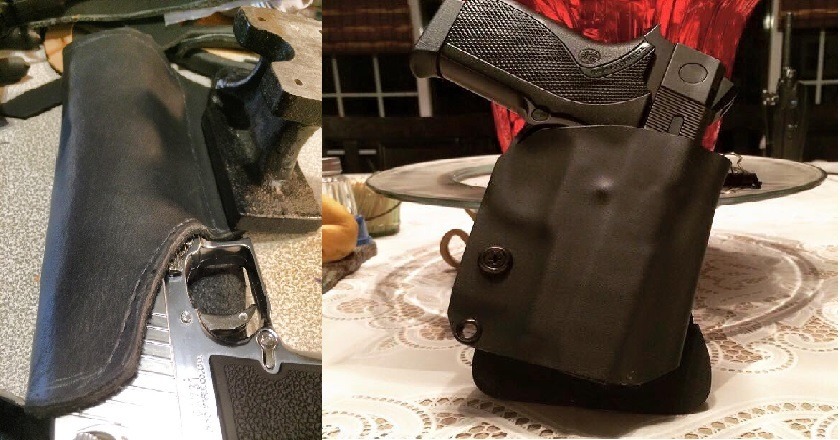
Open Trigger Holster Photo Via Facebook/AbbyDarkStar
Closed Trigger Holster Photo Via Facebook/SecretSquirrelEDCInc
When looking at shoulder holsters, always purchase one where the gun is facing downward. Why? Because a lot of shoulder holsters have the gun pointing directly behind you. Some don't think of this as a bad thing, but remember that one of the first rules of handling a gun is to always keep it pointed in a safe direction and never aim it at someone or something that you're not intending to shoot. Having a holster that points the gun directly behind you means that you're constantly aiming your gun at anyone in back of you.
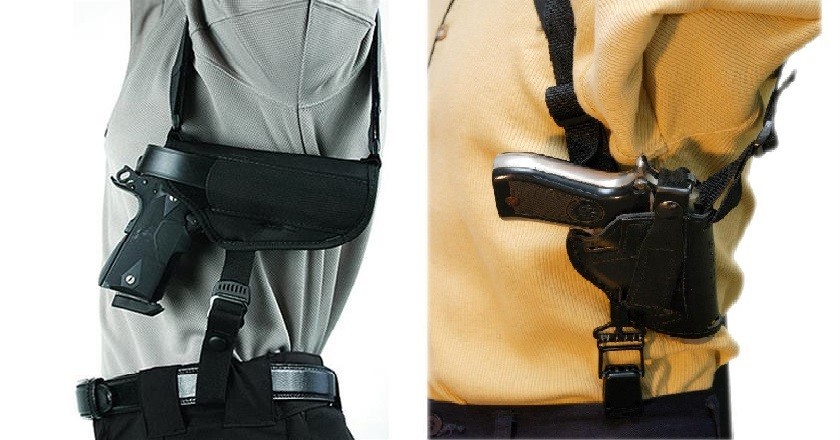
Left shoulder holster photo via Facebook/LightSpeedSupply
Right shoulder holster photo via Facebook/ShamrockHolsters
Look for holsters that have retention. You can order holsters that specifically fit your gun and would make it a lot harder for someone to grab from you. Some holsters offer additional straps or switches, but consider how you would be able to draw your weapon if it is needed.
4. Using a holster that's not easily accessible.
After determining where you can carry most comfortably, also consider how easy it will be for you to access. Though an ankle holster may be easy for you to access while sitting in the car or laying down during an attack, it is not the most practical for you to use during an attack while you're standing.
Also, try working with different degrees and angle your holster based on what feels natural. If you are drawing your weapon from a holster that is angled too far forward or is placed too high above the belt, this will result in an unnatural draw-stroke and can make it harder for you to access in a dangerous situation.
5. Acting unnatural.
One of the biggest (and most comical) mistakes that I see with first-time carriers is how they carry. Walking awkwardly and not-so-casually looking to see if the gun is still there only makes it more obvious that you're carrying concealed. If everyone knows, then what is the point?
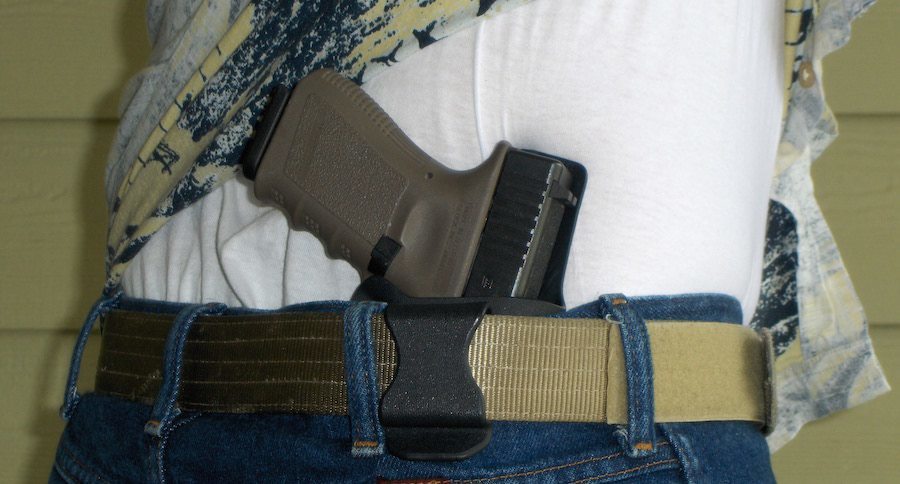
6. Wearing inappropriate fabrics.
Try not to wear fabrics that may catch on your pistol grips or holster. Light-weight and loosely woven fabrics can print easily and light-colored fabrics can outline the dark color of the firearm.
Also consider that choosing a form-fitting material can make it even harder for you to properly conceal your handgun. Carrying a concealed weapon doesn't automatically mean you're banned from the fashion world for life. All it means is that you'll have to work a little harder to incorporate your carry system into your wardrobe.
7. Adjusting in public.
One guaranteed way to freak out the general public is to lift your shirt and start messing with your gun. If your holster has slid into an uncomfortable position, do not start adjusting it in public. Instead, find a private area where you can safely reset your holster.
8. Carelessly or improperly holstering and securing a weapon or magazine.
The last thing you want to do is drop your gun or magazine in public, so make sure that everything is safely secured to you. This may be difficult to get used to at first, which is why I would recommend practicing daily. To help get yourself more comfortable, try doing day-to-day household chores while wearing your holster.
9. Thinking you're invincible.
Carrying a concealed handgun is a huge responsibility and should not be taken lightly. Just because you now have a gun on your person does not mean that you have automatically eliminated any and all threats. You would avoid trouble if you were not armed and should avoid trouble even more so when you are.
10. Not knowing the laws in your area.
Before taking even one step out of your house with your concealed weapon, be 100% sure that you know the laws in your area. Second, never assume that laws are the same from city to city. This is not always the case and can get you in a lot of legal trouble.
Finally, understand that just because your concealed carry permit is valid in your state does not mean that other states will honor it.
When carrying, be sure to ALWAYS have your concealed carry license with you. If you are asked for your permit by law enforcement and are unable to provide legal documentation, you could end up facing criminal charges.
NEXT: EXCLUSIVE INTERVIEW: TED NUGENT DISCUSSES THE ELECTION, PUBLIC LAND, AND MORE
